- News
- Reviews
- Bikes
- Accessories
- Accessories - misc
- Computer mounts
- Bags
- Bar ends
- Bike bags & cases
- Bottle cages
- Bottles
- Cameras
- Car racks
- Child seats
- Computers
- Glasses
- GPS units
- Helmets
- Lights - front
- Lights - rear
- Lights - sets
- Locks
- Mirrors
- Mudguards
- Racks
- Pumps & CO2 inflators
- Puncture kits
- Reflectives
- Smart watches
- Stands and racks
- Trailers
- Clothing
- Components
- Bar tape & grips
- Bottom brackets
- Brake & gear cables
- Brake & STI levers
- Brake pads & spares
- Brakes
- Cassettes & freewheels
- Chains
- Chainsets & chainrings
- Derailleurs - front
- Derailleurs - rear
- Forks
- Gear levers & shifters
- Groupsets
- Handlebars & extensions
- Headsets
- Hubs
- Inner tubes
- Pedals
- Quick releases & skewers
- Saddles
- Seatposts
- Stems
- Wheels
- Tyres
- Health, fitness and nutrition
- Tools and workshop
- Miscellaneous
- Tubeless valves
- Buyers Guides
- Features
- Forum
- Recommends
- Podcast
review
£630.92
VERDICT:
The best value performance groupset is better than ever
Weight:
2,512g
Contact:
At road.cc every product is thoroughly tested for as long as it takes to get a proper insight into how well it works. Our reviewers are experienced cyclists that we trust to be objective. While we strive to ensure that opinions expressed are backed up by facts, reviews are by their nature an informed opinion, not a definitive verdict. We don't intentionally try to break anything (except locks) but we do try to look for weak points in any design. The overall score is not just an average of the other scores: it reflects both a product's function and value – with value determined by how a product compares with items of similar spec, quality, and price.
What the road.cc scores meanGood scores are more common than bad, because fortunately good products are more common than bad.
- Exceptional
- Excellent
- Very Good
- Good
- Quite good
- Average
- Not so good
- Poor
- Bad
- Appalling
Shimano 105 is the privateer standard. That's the basic premise of this review: if you read no further, then know that you're getting a groupset that's so close in look and functionality to Dura Ace and – especially – Ultegra that's it's very hard to justify the extra spend. If it was my money, this is the mechanical groupset I would buy for racing and fast riding. The return for going higher is a very slight weight reduction, and looks that are a bit more shiny. Really that's about it: the Shimano 105 groupset is so good now that the gaps in performance have all but disappeared.
Pros: Near flawless performance, great value, good looks
Cons: Nothing really
Let's take a look at the parts in turn
Chainset
The 105 chainset is now a direct descendant of the Dura Ace chainset. It uses a very similar construction for the spider; Shimano have been using their Hollowtech process for a long time and they've stuck with it in spite of their rivals moving to carbon. The process results in a hollow crank arm; the new crank design is wider but the weight overall is reduced. The outer chainring is heavily machined on the inside face to reduce weight, like the previous version, but retains splines across the machined section to make sure stiffness isn't compromised. It's not quite as technically advanced as the Dura Ace and Ultegra outer rings, which feature a two-piece construction, but you wouldn't know unless you looked at it from the back. The design is a bit more susceptible to storing grime in all the recesses but that's not a huge issue.
> Buy Shimano 105 R7000 groupset
Stiffness is right up there with the best. Shimano are persisting with a 24mm steel axle, where others have moved to 30mm aluminium axles, but it doesn't appear to make any meaningful difference to the performance of the crankset. This is a super-stiff unit: jump on the pedals and give it the beans and there's barely any movement of the rings at the front derailleur, so you hardly ever get any mech rub when things are set up properly.
Shifting between the two rings is excellent, with the new front mech (more on that below) making front shifts light and predictable; the front shifting is probably the biggest difference between this groupset and its predecessor. I moved directly from one to the other, stripping a Shimano 105-5800 groupset off my race bike to fit this new kit, and there is a noticeable difference between the two in the lightness of the shifting at the front.
Dual control levers
Shimano doesn't currently have any plans to trickle Di2 down to 105 level, so if you're after electronic shifting then you'll need to go up to Ultegra. The new Shimano 105 levers are redesigned, and it'll not be a surprise to know that they're taking on some of the changes made further up the groupset hierarchy. The shifting mechanisms have been tweaked to make the shift a bit more snappy, and the shape of the lever has been changed: it's slightly more compact and squarer, and features a patterned rubber cover for extra grip on the hoods. Personally I find the new shape very comfortable and I found the old shape very comfortable too, so it hasn't really improved things in that regard, but they are a bit more grippy in the wet which is a bonus, and they maybe look a bit more purposeful.
You don't get the carbon brake lever that you have on Ultegra and Dura Ace, so the levers are a bit heavier as a result. These are the mechanical levers: there's also a new hydraulic lever for use with hydraulic disc brakes, which replaces the current, slightly clunky, RS505 unit. We have those in for testing too but we'll report on them separately.
Read more: Your complete guide to Shimano groupsets
The operation of the levers will be familiar to anyone that's ever used a Shimano Dual Control system: both levers towards the middle to shift up, just the inner lever to shift back down. It generally works faultlessly, and these levers are no exception. Shifts up and down the cassette, and from one chainring to the other, are very efficient and predictable. You can shift up to three gears up the cassette at once; downshifts are one at a time. The throw of the lever has been shortened slightly from the 5800 lever, which makes shifts from the drops a bit easier. The reach adjustment range has been increased too, which will be happy reading for those with smaller hands.
The 105-7000 levers have one foible, which is replicated right across the Shimano Dual control universe: if you accidentally catch the brake lever when you want to downshift then the mechanism doesn't engage and you'll need to try again. It's not the end of the world by any stretch of the imagination, but it is an issue to be aware of, and one I often find myself wishing they'd address. Normally it's gloves that trigger it; in the summer it's rarely a problem.
Rear derailleur
The rear derailleur is completely new for 105, moving over to Shimano's Shadow technology that's come over to the road from the mountain bike groupsets. The mechanism is significantly more compact than the previous mech, meaning that the derailleur doesn't protrude so far outside the frame (33mm, as opposed to 45mm). This means it's better protected in the event of a crash. The new derailleur is available in two cage lengths; the shorter SS mech is for cassettes up to 11-30T, and the GS has a claimed maximum of 11-34T (although in reality it'll handle a lot more). The new design is compatible with direct mount frames, although there aren't many of those in the road sector right now.
Shimano tried a new barrel adjuster design for the Ultegra 8000 groupset, and it wasn't very well received. The 105-7000 mechs have a standard Shimano barrel adjuster that works just fine. Setting up the mech is pretty easy, although the position of the pinch bolt makes it a bit awkward to cinch. Once you're there, though, shifting is everything you'd expect: precise and repeatable across the whole cassette. I've used both the SS derailleur on an 11-28 cassette and the GS derailleur on an 11-34, and there's no meaningful difference in performance between the two: shifts are crisp and light. The higher spring tension of the new mechs means that there's a lot less chain movement overall; Shimano don't offer a clutch mech like they do with Ultegra (the RX derailleur) but unless you're running a single ring setup that's not really a concern. I found that the stronger spring and the new design makes it marginally harder to drop out the rear wheel, but I think it's mostly that a slightly different technique is needed.
Front derailleur
Again, the front derailleur is fundamentally redesigned. The new front mech uses a cam arrangement to actuate the shift, and that allows the unit to be much more compact. The issue with the previous mech was the long pull arm that in some cases could clash with a larger tyre. That's not an issue with the new version, and it has other benefits too. You can run an outer cable all the way to the mech which is useful for some bikes with tricky internal cable runs. The new cable clamp also features a tension adjustment screw, which means you can dispense with an inline barrel adjuster. As before there's a polymer insert on the back of the cage which cuts right down on noise if there's any cage rub at the extremities, so the mech is a bit more forgiving of setup being slightly off.
The shift is improved. It's not a seismic change, but the front shifts are a bit lighter and more predictable than with the previous groupset. That's down to the combination of shifters, chainrings and mech, so it's not necessarily just down to the new mech design, but that's what you want: all the groupset components working together well.
Brakes
Most of the changes to the brake callipers happened with the previous 105-5800 groupset: there was a change to a symmetrical dual-pivot design, support for direct mount frames and room for 28mm tyres. Those changes are all carried through; the only noticeable difference is that the quick release lever has been repositioned so that it tucks in to the arm when it's closed. It might be more aero, who knows; it's certainly a little bit neater.
The Shimano symmetrical dual-pivot brakes are, for me, the best road rim brakes out there. They have a very solid feel and modulation is excellent. I've been using the brakes on my race bike, which has Swiss Side Hadron 485 wheels that have an alloy brake track, and the brake performance from a rim brake is about as good as you're going to find for a rim brake. The 105 callipers are not noticeably inferior to the Ultegra brakes in anything other than weight, and even then we're only talking about 20g here and there.
Cassette
The main change to the 105 cassettes for the 7000 series groupset is that there are some wider range options available. 11-32 was the biggest you could go with the previous 105 groupset, but now there's an 11-34 option too. It's designed to also fit a mountain bike wheel, so you need the optional spacer if you're fitting it to an 11-speed road wheelset. The fact that the weights stated for the old and new cassettes are identical suggests that not much has changed otherwise. Not that it needed to: shifts are crisp right across the sprockets.
Chain
The 105 chain gets the same ultra-low friction SIL-TEC surface treatment as the more expensive chains and – praise be! – Shimano chains now come with a quick link, making them much easier to fit and remove. The quick link isn't maybe quite as easy to use as a KMC one but it's a whole lot better than the break-off pin they insisted on using up until now. The 105 chain is a whole 3g heavier than the Ultegra one, which I doubt you'll notice.
Pedals
Shimano's SPD-SL system is well-established, and the PD-R7000 pedal is an incremental development over the last incarnation. The new design of the carbon fibre reinforced resin pedal body has managed to shave a bit of weight, though; the weight is down 25g to 265g, only 17g more than the Ultegra pedals. There's a big range of tension available, so you can be securely or loosely held to your bike depending on your preference. The SPD-SL system is my personal favourite for road cycling, but different pedals suit different folks. The pedals come shipped with SM-SH-11 (yellow) cleats, which have 6° of float. There are two other options: blue, with 2° of float, and red, with no float at all.
The pedals have a nice low profile which means you can lean them over into the corners a long way; Shimano says they can cope with a 31° lean. Sealed axles and cartridge bearing should mean a long service interval. In use they're indistinguishable from the more expensive Ultegra pedals; weight is really the only difference here.
Weight
Overall, you're looking at a full system weight that's about 200g heavier than Ultegra 8000, and you can save yourself half a kilo by going all the way to Dura Ace at the top of the mechanical tree. Here's a chart of how the weights of the different components stack up.
| Weights (grams) | Weight differences | ||||||
|---|---|---|---|---|---|---|---|
| 105-7000 | Ultegra-8000 | Dura Ace-9100 | DA vs 105 | % | Ultegra vs 105 | % | |
| Chainset | 713 | 668 | 614 | 99 | 13.88 | 45 | 7.33 |
| Dual Control levers | 500 | 438 | 365 | 135 | 27.00 | 62 | 16.99 |
| Rear mech SS | 225 | 200 | 158 | 67 | 29.78 | 25 | 15.82 |
| Front mech | 95 | 92 | 70 | 25 | 26.32 | 3 | 4.29 |
| Cassette 11-28 | 284 | 251 | 193 | 91 | 32.04 | 33 | 17.10 |
| Chain | 257 | 257 | 247 | 10 | 3.89 | 0 | 0 |
| Brakes | 379 | 360 | 326 | 53 | 13.98 | 19 | 5.83 |
| Pedals | 265 | 248 | 228 | 37 | 13.96 | 17 | 7.46 |
| Total | 2,718 | 2,514 | 2,201 | 517 | 19.02 | 204 | 9.27 |
Is it worth spending the (significant) extra money to get Ultegra over 105 these days? Not in my opinion, for the riding that I do. It's nice to have shiny things, of course, and I'd much rather you spent your disposable income on bike parts than pretty much anything else. But speaking as a third-cat racer with a limited budget, I'd say this is as good as it gets in terms of bangs per buck right now. In terms of functionality there is no compromise here: this groupset is better than Dura Ace was a few years ago, for a fraction of the price. There's no aspect of its performance that would be meaningfully improved by going one rung up the groupset ladder. You'd just about be able to tell the difference in a blind test if you went up to Dura Ace – and you'd save half a kilo, which isn't insignificant – but you'd be spending more than twice as much.
The weight savings aren't spread evenly. If you were looking at getting some Ultegra bits You'd be hard pressed to justify upgrading from a 105 chain, for example, to net the 3g weight saving that gives. The biggest saving in absolute terms is the Dual Control levers (62g) and the biggest in terms of percentage is the cassette (17% lighter). The second is interesting in that the cassette is often a place where bike manufacturers spec down as it's not an obvious downgrade.
The new 105 groupset is better than the outgoing 105-5800 system: the shifting is improved and it gets nearly all the innovations from the more expensive groupsets. But it remains the case that 105-5800 is a really excellent groupset too and the release of 105-7000 will mean there are bargains to be had out there. Currently, looking online suggests that the new 105 is about £150 more expensive right now than its predecessor. Is the new groupset £150 better than the previous one? It's a pretty marginal decision, unless you're looking for the extra capacity from the GS mech and wider range cassette. If you're buying a new bike with this groupset already fitted, though, then rest assured: it represents stellar value for the near-flawless performance you get. In terms of bangs per buck, this is as good as it gets.
Verdict
The best value performance groupset is better than ever
road.cc test report
Make and model: Shimano 105 R7000
Size tested: 52/36 11-30
Tell us what the product is for and who it's aimed at. What do the manufacturers say about it? How does that compare to your own feelings about it?
SHIMANO 105 R7000 Series will empower more riders than ever before to embrace the sport of road cycling. It will become the supportive groupset that beginner riders choose to help them train for, and ride in more serious races.
By combining trickle down technology with a greater accessibility, SHIMANO 105 will continue to motivate and inspire more riders than ever to go after greater challenges.
Rate the product for quality of construction:
9/10
Very nicely made and finished. Not quite as slick as the more expensive groupsets, but not far off
Rate the product for performance:
10/10
Near faultless performance
Rate the product for durability:
9/10
Mostly alloy construction means it should last
Rate the product for weight (if applicable)
9/10
Only 200g more than Ultegra; hard to justify the extra spend for the next groupset up if weight's your thing.
Rate the product for comfort (if applicable)
9/10
Rate the product for value:
9/10
The best value current groupset out there. The outgoing 5800 series 105 is still worth buying and it's currently quite a bit cheaper
Tell us how the product performed overall when used for its designed purpose
Almost perfectly
Tell us what you particularly liked about the product
Works brilliantly; looks great
Tell us what you particularly disliked about the product
Nothing really
How does the price compare to that of similar products in the market, including ones recently tested on road.cc?
It's the best value performance groupset for me
Did you enjoy using the product? Yes
Would you consider buying the product? Yes
Would you recommend the product to a friend? Yes
Use this box to explain your overall score
Exceptional performance and value. A really good groupset. Recommended.
About the tester
Age: 45
I usually ride: whatever I'm testing... My best bike is: Kinesis Tripster ATR, Merida Scultura
I've been riding for: Over 20 years I ride: Every day I would class myself as: Experienced
I regularly do the following types of riding: road racing, time trialling, cyclo cross, commuting, touring, club rides, sportives, general fitness riding, fixed/singlespeed, mtb, Mountain Bike Bog Snorkelling, track
Dave is a founding father of road.cc, having previously worked on Cycling Plus and What Mountain Bike magazines back in the day. He also writes about e-bikes for our sister publication ebiketips. He's won three mountain bike bog snorkelling World Championships, and races at the back of the third cats.
Latest Comments
- ktache 1 hour 27 min ago
The batteries were not the easiest to find, and the brackets broke easily. The switch was far better than the D cell quick release ever readys that...
- ktache 1 hour 53 min ago
There are people out there who will make you the belt out of your old tyre.
- chrisonabike 1 hour 54 min ago
Furry dice and an air freshener for your helmet.
- AidanR 2 hours 7 min ago
Looking at the pictures in the linked article, the bikes aren't actually inconsiderately parked. The only issue is that they're on private property...
- Simon E 2 hours 42 min ago
Ah yes, those are hopefully not the 'master craftsmen' that has constructed a wide range of shoddy Italian cars and motorbikes over the years with...
- Simon E 3 hours 5 min ago
A SuperSix is definitely not an all-rounder....
- JLasTSR 3 hours 11 min ago
Since most of.my clothes come.from.charity shops.or the eBay nearly for.nothing clothing section I don't tend.to.worry if they wear out, I am also...
- chrisonabike 3 hours 57 min ago
Just get them to walk a treadmill - or better, ride exercise bikes to power path lighting.
- AidanR 4 hours 33 min ago
So his advisers were trying to move funds around to cover losses, but in a way that needlessly created additional liabilities? It would have been...










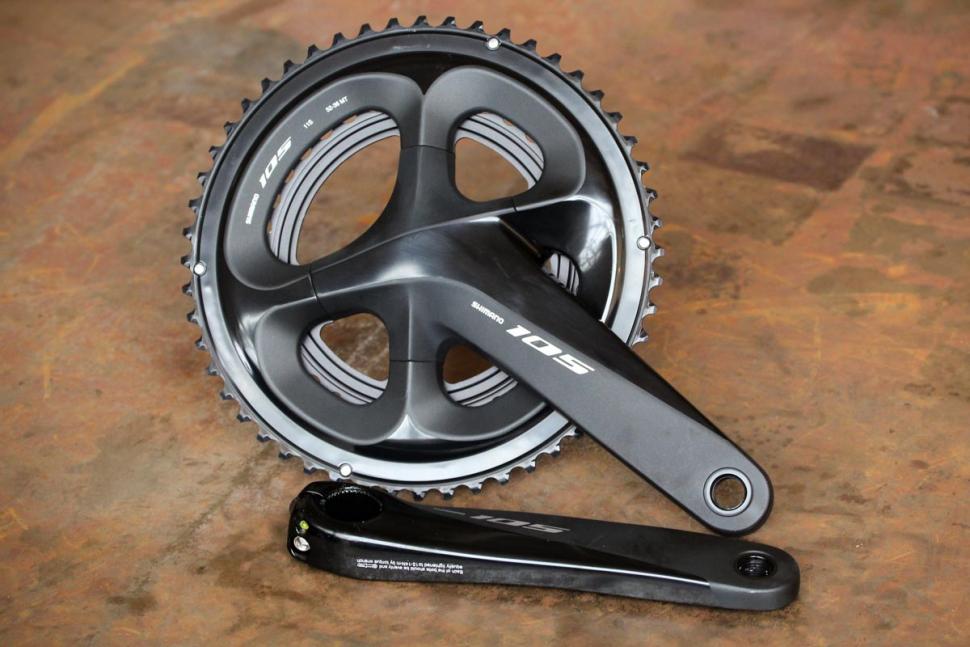
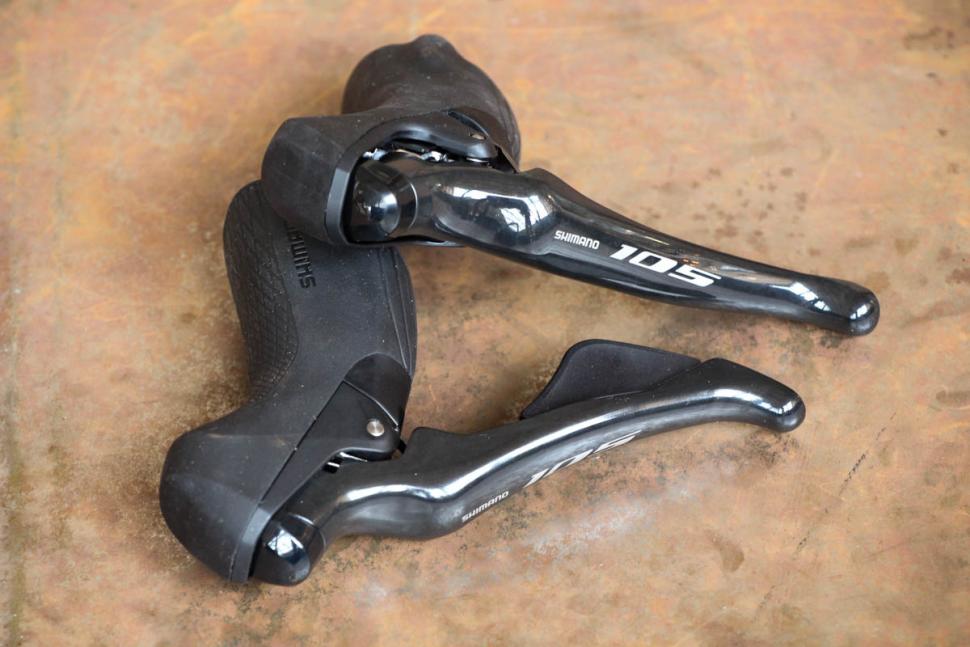
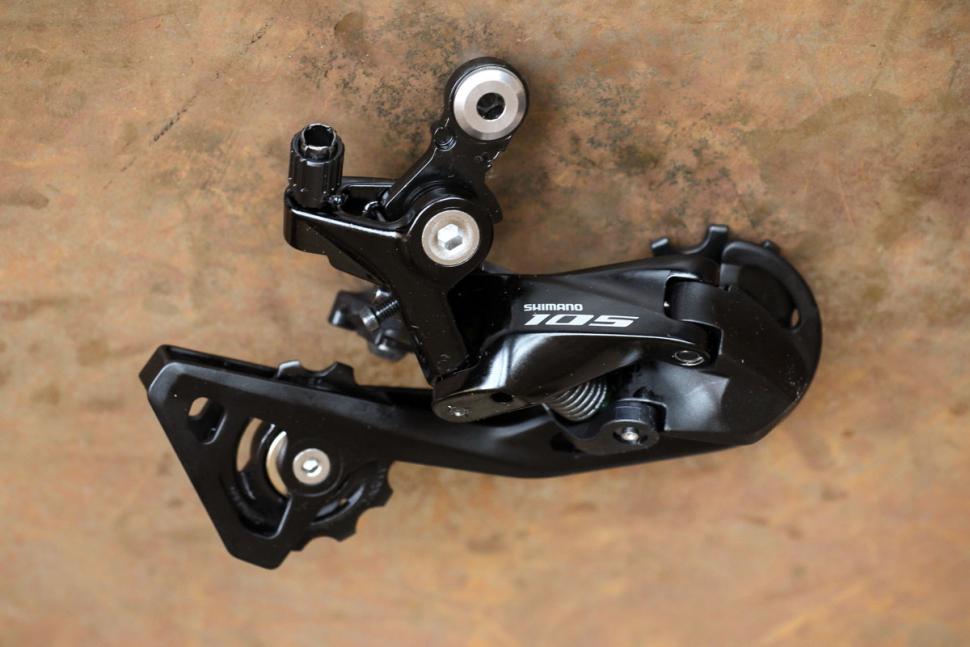


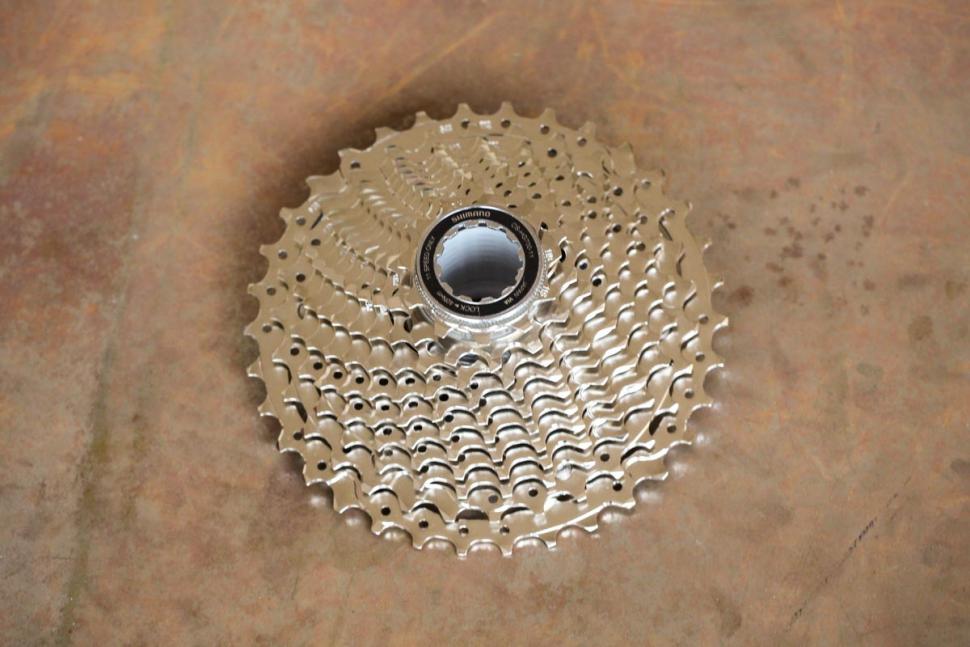




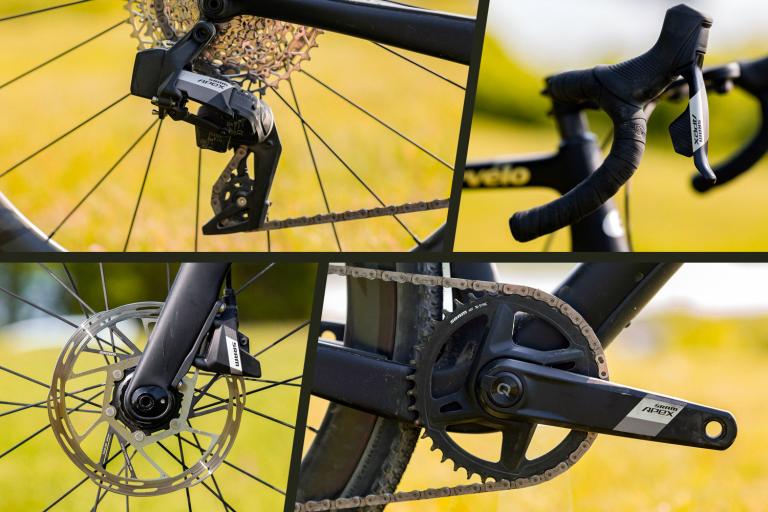
Add new comment
35 comments
Exactly this for me.
105 is a brilliant groupset, and this latest iteration sounds superb, however to restrict comparisions with Ultegra /Dura Ace to weight and immediate performance is a bit short sighted.
I'm running 9100 on the race bike this year and have been blown away by its performance; not just out of the box performance, but performance after nearly a year of abuse (including a crash). its staying power is a huge differentiator that needs to be factored in.
Conversely, 5800 has been on my winter bike since 2014, and i can confirm that I am now on;
- my fourth rear mech (upgraded to Ultegra last time out)
- my third set of cranks (online prices mean its cheaper / same price to replace the whole chainset than it is to replace the outer chain ring which is the part that wears hard)
- 2nd set of brake calipers
- 3rd bottom bracket (up graded to Dura Ace now)
I have also replaced countless chains and cassettes. A 105 cassette will do half a winter, where as an Ultegra cassette will do a whole season.
I have to caveat the above by saying that as a winter / training bike, this groupset sees all teh worst of the conditions, which will accelerate wear. That aside the longevity of Ultegra versus 105 is noted.
I've got the new 105 on a bike that'll be seeing plenty of winter miles, so we'll revisit this in the new year...
Don't get me wrong, It's terrific that Shimano provide such an excellent functioning groupset with the trickle down features of the higher lines. An "affordable" groupset that works this well makes cycling and cycling sport accessible to more people and might keep more people on their bikes on difficult days, not to mention keep budget racers going when the going is tough (I broke 2 Di2 rear derailleurs in consecutive weeks racing CX and the cost nearly broke me). Shimano should be applauded for that, no doubt. It's just that the wear rate is an important consderation both financially and environmentally when comparing the groupsets.
//LINK TO JOHN'S LOW GEARING PIECE// is probably this one: https://road.cc/content/feature/246424-how-get-ultra-low-gearing-gravel-...
I was on holiday, okay?
Pages